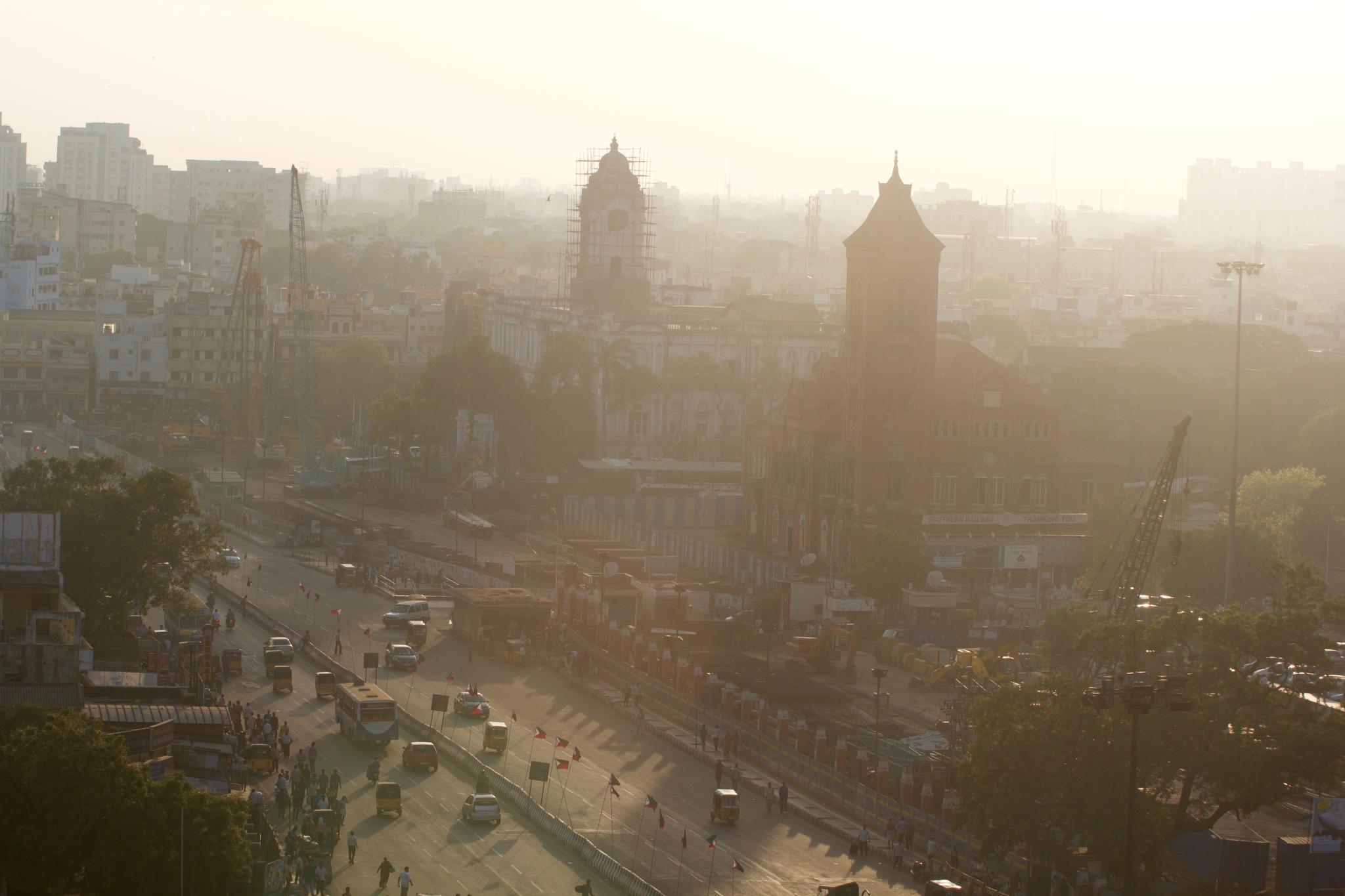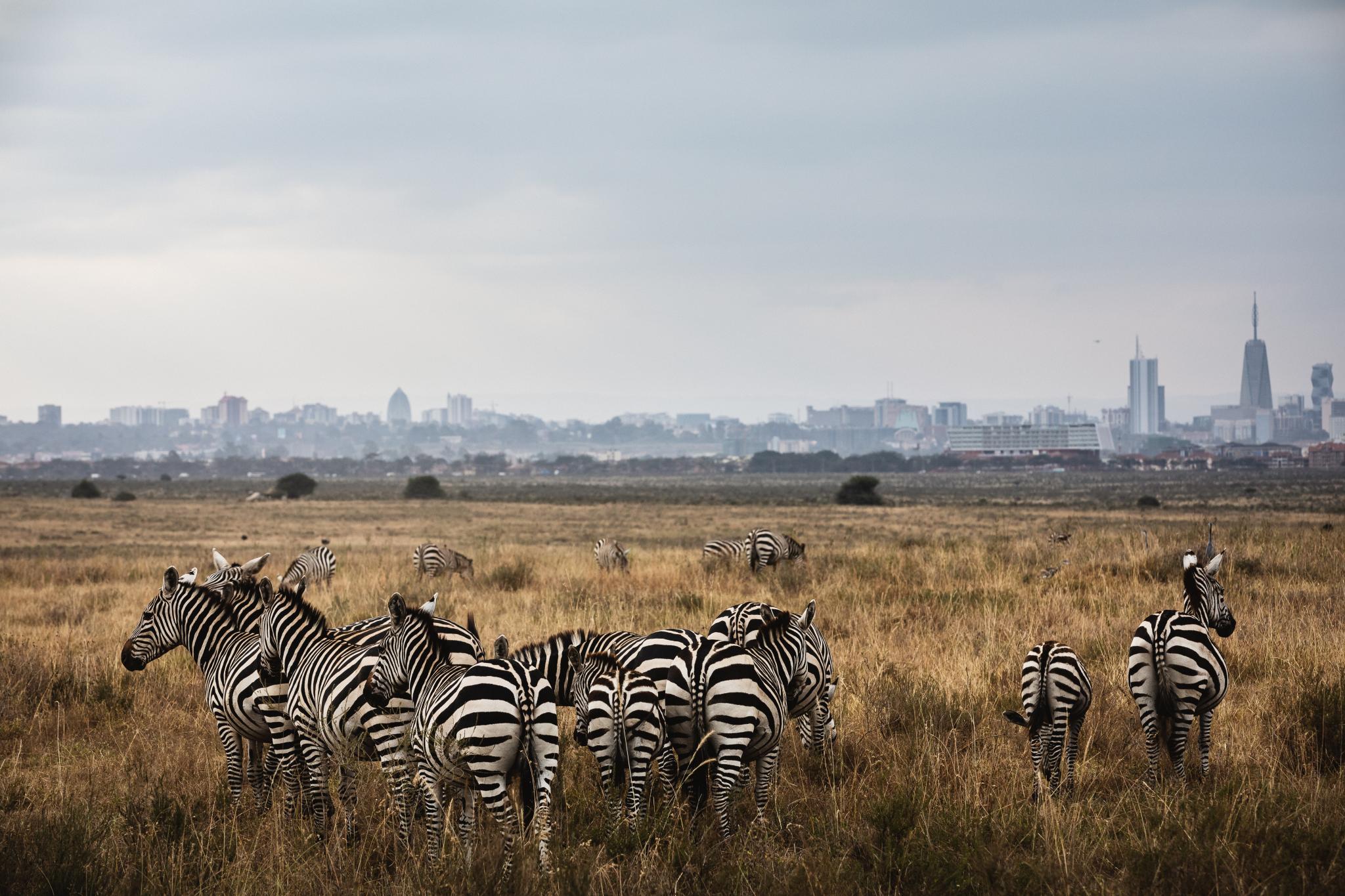The first article in the urban series outlined some of the barriers and opportunities towards more resilient urban spaces. This article embarks on a historical journey, tracing the roots of urban resilience in three diverse yet interconnected cities: Rotterdam, Nairobi, and Chennai. Delving deep into their past, we unravel the narratives of endurance, innovation, and community spirit that have moulded these cities into bastions of urban resilience.
Cities are living, breathing chronicles of the past and the shaping forces of the future. They are the physical spaces where ideas of progress have been shaped, ideas that transcend city limits and even regional and continental boundaries into the international marketplace of ideas. Urban centres have witnessed and influenced the spectacular rises and collapses of regimes and civilisations, an early example can be found in the tale of the ancient city of Mycenae, emblematic of the Bronze Age civilisation’s collapse.
Though the fate of ancient low-density metropolises of the Antiquity may seem remote from that of today's sprawling megacities, it serves as a stark reminder that even the most "advanced" and complex urban centres can face a sudden or gradual demise. Underscoring the invaluable importance of understanding historical context to begin to craft cityscapes that are more resilient, inclusive, and sustainable. Today, 55 per cent of the world’s population live in urban areas, it is estimated that by 2050, this figure will increase to 68 per cent driven by rapid and largely informal urbanisation in parts of Africa and Asia. This makes the stakes for urban transformation even higher and deeply intertwines its processes with the future of humanity.

Rotterdam: Rising from the Ashes
The echo from the fall of historical metropoles resonates in modern Rotterdam, the first settlers in a city that has navigated several existential threats, and whose post-war transformation stands demonstrates the complex interplay between tradition, innovation, and resilience. Rotterdam’s transition from a small fishing to an international port city, has been marked by several existential threats, posed by forces of nature, human tragedy, and international developments. As a low-lying city in the Dutch river delta, Rotterdam is particularly vulnerable to flooding, for instance, one of the early settlements built in the area now referred to as Rotterdam was wiped off the map in the 13th century. To add to the precarious origins of the city, Rotterdam also endured the devastation of World War II, which left the city standing as a testament to, a metonym for the destruction caused by conflict. German and Allied bombing decimated parts of the cityscape, leading to hundreds of deaths and leaving thousands homeless.
It is also worth noting that before the war, the need to modernise the city was already being considered but was frequently placed in conflict with the need for preservation of the city’s heritage. Rotterdam was overwhelmed by rapid urbanisation in the 19th century, between 1880 and 1920 the city’s population tripled. As part of the rebuilding and modernising process, displacement as a result of the war was followed by the further displacement of the urban poor in the form of slum clearance. This aspect of Rotterdam’s post-war reconstruction reflects the degree to which informality and marginalisation, are not exclusive to the Global South; it mirrors the historical growth of cities in Europe and North America during the 19th and early 20th centuries, revealing that the challenges posed by rapid urbanisation transcend geographical and chronological boundaries. In addition to ethical and egalitarian-based dilemmas, the emphasis on reconstruction also meant that improving and maintaining coastal infrastructure took a backseat.
The devastating North Sea Flood of 1953 brought unparalleled destruction in parts of The Netherlands, providing a stark reminder of the vulnerability of human settlements to the forces of nature as well as the need to head warnings from the past. In response, the state became a pioneer in developing innovative flood protection systems, laying the foundation for what would later be known as the world-renowned Delta Works. This monumental project, comprising an intricate network of dams, locks, dikes, levees, and storm surge barriers, not only shielded cities like Rotterdam from future flooding but also became a symbol of the city's forward-thinking approach to environmental resilience.
Over the decades, Rotterdam's skyline rose anew, reflecting the city's determination to rebuild, innovate, and include all its residents in its progress. The innovative response to the destruction of war, the ethical dilemmas of urban development, and the fury of natural disaster spurred a transformation in urban planning. A model of modern urban living, embracing architectural marvels and social inclusivity. Rotterdam’s journey, marked by the challenges of post-war reconstruction, the displacement of vulnerable communities, and the forces of nature, embodies the essence of resilience: the ability to learn, adapt, and rebuild stronger than before. It is a narrative of constant reinvention, where the past is acknowledged, the present is embraced, and the future is shaped with a spirit of resilience.

Chennai: Weathering the Storms
Nestled on the Coromandel Coast, Chennai has a rich history as a maritime trading centre and of facing nature’s wrath with unwavering determination, battling cyclones and monsoons. Much like Rotterdam, the city has evolved resilient infrastructures, integrating ancient wisdom with contemporary technology. Chennai has a rich and diverse history that spans over 2,000 years, predating the arrival of the British East India Company it fell under the rule of various empires. Pre-colonial Chennai was a significant trading and fishing village as well as a centre for the flourishing of art, textiles, and culture. With the arrival of the British East India Company in the 17th century Chennai grew as a major administrative and economic centre, and from the 19th century began to expand beyond its historical boundaries. The city played a pivotal role in the Indian independence movement, as the birthplace of prominent thought leaders for the movement and the site of several protests, as well as the home of subversive publications and institutions.
Chennai's colonial past left a lasting impact on its urban infrastructure and urban planning policy, the former being designed for an earlier era, and the latter being divorced from local fora where communities could voice their needs. The colonial model of ‘dual cities’ perpetuated a clear divide in terms of infrastructure and service provision between the fort -the area occupied by colonial administrators- and the ‘native’ quarters. The dual city model led to the marginalisation of local communities and the perpetuation of socioeconomic disparities that persist today. Other modern challenges - chronic traffic congestion, water scarcity, flooding, costal erosion and poor waste management are rooted in historical decisions. Waste management issues in particular stem from disruptions in traditional practices during the colonial period, coupled with a surge in consumption and waste generation. Furthermore, Chennai's susceptibility to the impacts of climate change traces back to historical decisions along the coast, highlighting the need to retrofit past infrastructure decisions with sustainable practices.
Chennai's colonial past, while leaving scars on its urban infrastructure, has not hampered innovation and progress, instead, the city has emerged as a beacon of technological innovation, with a thriving IT sector and holds a rich cultural tapestry that adds vibrancy to its identity. In the face of historical echoes and contemporary complexities, Chennai continues to evolve, embodying resilience and innovation, making it a living chronicle of India’s past and a dynamic canvas for its future.

Nairobi: Growing Boldly
Nairobi city stands as an emblem of dynamism and activity, not just on a national or regional scale, but on a continental and international scale. Its evolution from a colonial era railway depot in the late 1890s to a flourishing modern metropolis is a testament of its temerity in embracing modernity and innovation in its transformation journey. Now termed the Silicon Savanah, the city is on a catalytic trajectory shaping the growth of the global technology industry hence reinforcing its primacy in Africa and worldwide.
The story of Nairobi’s transformation is however interspersed by tales of expropriation and exclusion. Originally known as "Enkare Nairobi," which translates to "cool waters", referencing the Nairobi River that flows through the region, the area was occupied by the indigenous Maasai community who relied on it as grazing land for livestock during dry seasons due to the presence of reliable water sources. The colonial regime displaced the indigenous and subsequently, Nairobi was curated to fit the needs of the colonial administration. Its growth took place at the expense of indigenous communities that were corralled into ‘African reserves’, marking the genesis of spatial exclusion policy in the city. To date, the city displays a socio-spatial divide and enduring disparities archetypical of its colonial past. Much like in Chennai, Nairobi today is built atop of and continues to sustain these structural inequalities, as higher-income areas are still those that housed mainly Europeans during colonial times.
Aside from the foregoing, a burgeoning population, rapid spatial transformation amidst various forms of resource and capacity deficits, have historically converged to amplify the city’s vulnerability to fast-paced urbanization and associated cumulative risks, chronic stresses, and acute shocks. From the rise of informal settlements, a manifestation of a housing shortage, severe water crisis, strained infrastructure, and environmental pollution, among other stresses, Nairobi still stands as the city that is daring amid adversity. Within the contours and dynamics of urbanization, opportunity has emerged and been fostered by communities residing in the city. Residents continue to demonstrate remarkable resilience through community-driven efforts, from organizing into neighbourhood associations to address service provision deficits, to supporting local artisans, and implementing sustainable waste management practices.
People’s ingenuities in dealing with perennial stresses have demonstrated the city’s flexibility and determination, beaconing innovations. Informality for instance has become a canvas upon which innovative and inclusive solutions are painted. Informal spaces, whether residential or economic, are vibrant spaces where opportunities are seized, entrepreneurship thrives, and resilient communities chart their own paths toward progress. Simultaneously, the city’s agility in technology uptake has accelerated its socio-economic transformation amid the perils of urbanization. From mundane informal activities to cutting-edge mobile payment solutions, Nairobi exemplifies a spirit of adaptability, creativity, and determination. It showcases that within the challenges lie the seeds of transformation, fostering a future where every corner of Nairobi can flourish.
The Role of Collective Ownership and Responsibility
Themes of collective ownership and responsibility echo loudly in Nairobi and Chennai’s enterprising spirit and Rotterdam's resilience. This clarion call urges citizens to embrace their roles as stakeholders in their cities, actively participating in shaping urban environments. Collective ownership signifies not just residing in a city but investing in its future, a sentiment embodied by Nairobi, Chennai, and Rotterdam alike. Simultaneously, the theme of responsibility reminds us of our duty to ensure cities remain equitable and inclusive. It underscores the importance of fostering a sense of ownership among residents, ensuring that cities are places where citizens have equal rights and opportunities.
This concept is at the core of urban narratives the world over, where community involvement and shared responsibility have left their indelible mark on city development. In line with this, the urban series will explore developments in the three cities mentioned in the article along with initiatives and movements elsewhere that reflect global collective action towards more inclusive urban spaces and systems.
